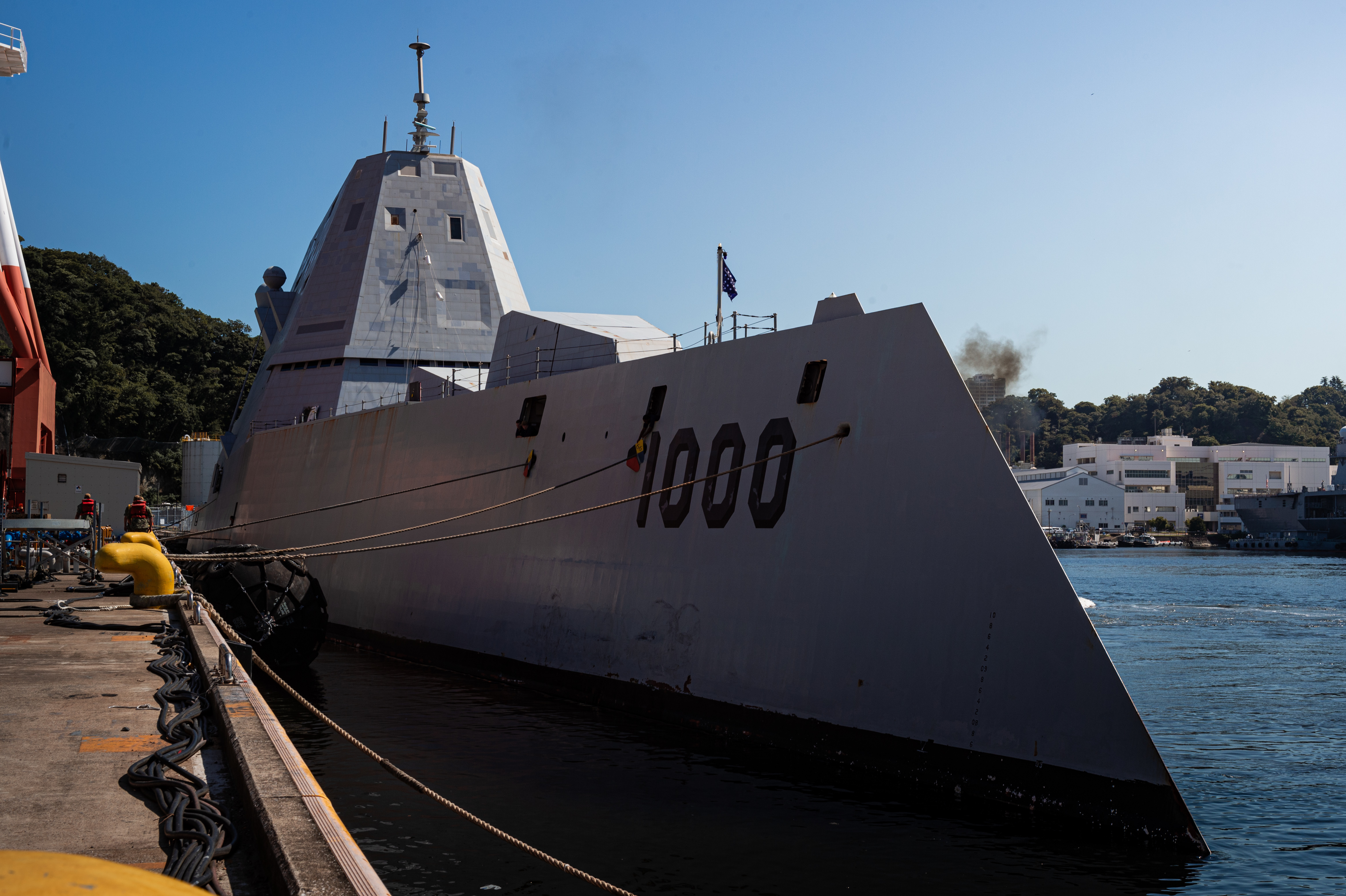
ARLINGTON, Va., – The Navy plans to perform a hypersonic missile test shot off guided-missile destroyer USS Zumwalt (DDG-1000) in December 2025, a service official said today.
“There are no less than five captains involved in making sure this happens,” Capt. Tyson Young of the program executive office for the Zumwalt Integrated Combat System said at the American Society for Naval Engineers’ annual Combat Systems Symposium.
While Young is managing the processes on the program manager side of the house, he’s also working on the developmental and technical changes needed to field the hypersonics on Zumwalt.
“We’re integrating an underwater weapons control system with [tactical support center] control in order to affect the data and message transfer to launch the missile,” Young said.
“We’re virtualizing both sets of control systems. My [integrated combat system] and our TSC … are going to do lab testing next month and then we’re going to do an onboard ship demo both in port and underway,” he added.
The requirements for the integrated combat system used to launch the hypersonic off the Zumwalt class will inform how the Navy fields and integrates hypersonic weapons on the Virginia-class attack submarines, according to Young.
“We’re attacking that through what we’re calling minimal integration … to reduce the amount of risk associated with that software,” Young said.
Last month, the Navy issued HII’s Ingalls Shipbuilding a $10.5 million contract to plan for the modernization period for Zumwalt and USS Michael Monsoor (DDG-1001). The Navy has said it wants to field hypersonics on the Zumwalt class in 2025 and the Virginia class in 2028.
The service can field about 12 missiles aboard each Zumwalt-class destroyer, USNI News previously reported.
Young pointed to Zumwalt‘s time operating out in U.S. 7th Fleet last year, noting he had the latitude from the fleet and type commanders to experiment with the ship and its combat systems.
“So the TYCOM of the fleet says do what you need to do to make sure that she’s operational and she’s functional because we understand the history of the program,” Young said.
“I give them the realization that I’m not going to make some change in the combat code or any software program that’s going to regress the capability, but bring additive capability or fix efficiency in the code or stability in the baseline,” he said.
While hypersonics are not nuclear weapons, the Navy’s head of strategic systems programs is overseeing them as part of his portfolio.
“It’s strategic, but it’s not nuclear. If you look at the numbers, particularly with what we’re going to with the ranges, it is very much a strategic asset. You can hold very high-value targets at risk … and you can do that with all these various platforms,” Vice Adm. Johnny Wolfe told USNI News in November.





